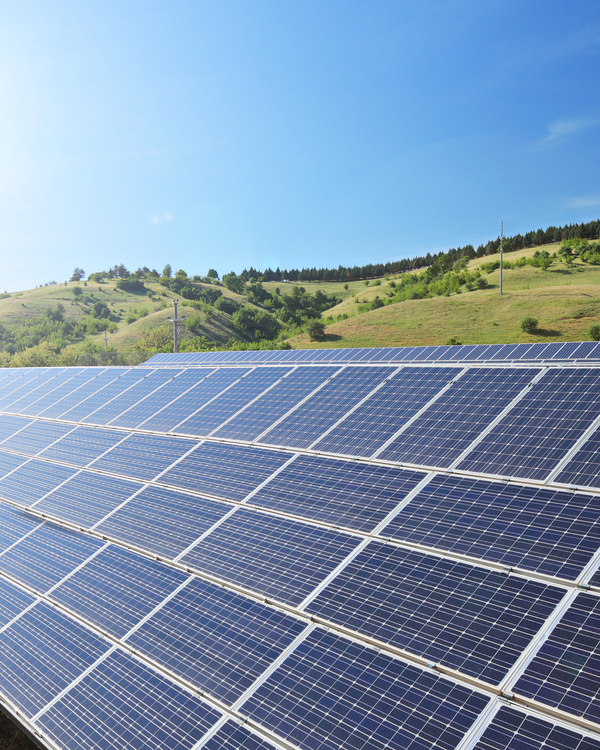Decarbonisation by 2050 - a Herculean task
The global economy is allowed to emit a maximum of 465 gigatonnes of greenhouse gases by 2050. According to forecasts, the climate will then have a 50 per cent chance of warming by "only" 1.5 degrees. However, around half of the budget has already been used up.

Possible consequences of progressive global warming can be illustrated using the so-called albedo effect. Albedo is a measure of the reflectivity of a body. Snow and ice have a high reflectivity. If the global temperature rises, ice and snow melt. Less sunlight is reflected and is absorbed by the earth instead. This leads to further warming and even more ice and snow melting - a self-reinforcing cycle. Such vicious circles must be broken in good time. If this fails, numerous of Earth's systems may reach climate tipping points, the Greenland ice sheet, for example, threatens to melt irreversibly, which would lead to a significantly higher global sea level.
The primary attempt at prevention is the 2015 Paris Agreement on climate change, which aims to limit the global temperature rise to 1.5 degrees Celsius and, in any case, to well below two degrees Celsius compared to the pre-industrial era. Adhering to these limits increases the chances that tipping points will not be reached.
What is CO2e?
CO2 equivalent (CO2e) is a unit of measurement used to standardise the effects of various gases on the greenhouse effect and therefore global warming. The best-known greenhouse gases are CO2, methane and nitrous oxide. The greenhouse effect of methane is around 25 times stronger than that of CO2. At the same time, the amount of methane in the atmosphere is lower.
According to the United Nations Intergovernmental Panel on Climate Change, there is a 50 per cent probability that temperatures will rise by a maximum of 1.5 degrees Celsius, provided that greenhouse gas emissions are limited to less than 465 gigatonnes of CO2e by 2050 from 2019 onwards. In order to limit the temperature rise to well below two degrees Celsius with a 66 per cent probability, a maximum greenhouse gas budget of 1090 gigatonnes is available.

Mix of measures
This requires a mix of more sustainable consumption, energy-saving measures, clean energy production and the protection and preservation of natural CO2e reservoirs. This can be achieved by implementing energy-efficient technologies in industry, transport and buildings. It also requires the promotion of renewable energies and the protection and restoration of ecosystems such as forests and oceans. The latter are natural carbon sinks. In addition, the development and implementation of decarbonisation technologies, such as carbon capture and storage (CCUS), plays a role in reducing the CO2e in the atmosphere.
Trillions in investment needed
The transition to clean energy sources and low-emission technologies requires huge investments in research and development as well as in infrastructure. The International Energy Agency (IEA) estimates that USD 4.5 trillion will have to be invested in renewable energies every year to achieve the 1.5-degree target. This is more than double the approximately USD 1.8 trillion that was invested in 2023. According to the International Monetary Fund, this contrasts with subsidies totalling USD 7 trillion (7.1% of global GDP) for fossil fuels.
Short-term investment costs are offset by long-term benefits. This is not always easy to communicate politically in democracies. In addition, international cooperation is complex and lengthy. No country wants to put itself at an international disadvantage by making commitments.
Clearly off budget
On this basis, it is not surprising that global greenhouse gas emissions under the Paris Agreement increased steadily since 2015, apart from the COVID lockdown year 2020:
| 2015 | 2016 | 2017 | 2018 | 2019 | 2020 | 2021 | 2022 | |
|---|---|---|---|---|---|---|---|---|
| Industrialised countries | 16.8 | 16.7 | 16.7 | 16.9 | 16.6 | 15.5 | 16.3 | 16.3 |
| Emerging markets | 32.0 | 32.3 | 33.1 | 34.1 | 34.5 | 34.1 | 35.7 | 36.3 |
| Total | 48.9 | 49.0 | 49.8 | 51.0 | 51.2 | 49.6 | 52.0 | 52.6 |
CO2e emissions in gigatonnes (source: Emissions Database for Global Atmospheric Research (EDGAR))
A new record figure of 52.6 gigatonnes was reached in 2022 and a figure at least as high is expected for 2023. This means that in just four years, we have already consumed around 45 per cent of the 465 gigatonnes available to us for the 1.5 degree target by 2050. The world has high hopes that we will manage with only 55 per cent of the remaining budget over the next 26 years.
Emerging markets, but not explicitly
Decarbonisation is taking longer in emerging countries in particular due to the technological backlog and available financial resources. At the same time, some of them are growing much faster than industrialised countries. Their energy requirements are increasing and must also be met with fossil fuels. As a result, CO2e emissions are rising in the emerging economies.
However, the rising CO2e rates in emerging countries are linked to consumption in industrialised countries. Companies in industrialised countries transfer production to third parties in emerging countries or relocate their production facilities there. In emerging countries, goods are generally produced more cheaply and with fewer regulations or levies in terms of CO2e emissions. Transport back to the industrialised countries is an additional burden. From a production perspective, around two thirds of global emissions come from newly industrialising countries. Emissions continue to rise there, while they are falling slightly in industrialised countries. However, the majority of these emissions are attributable to consumption in industrialised countries. In 2021, it caused 84 per cent of global CO2e emissions with a significantly lower population compared to emerging countries (1.4 vs. 6.5 billion people). Switzerland is no paragon here either- it emitted 45.2 million tonnes of CO2e in 2021. This corresponds to greenhouse gas emissions per capita of a moderate five tonnes of CO2e. However, if the emissions caused by imported goods abroad are added, the per capita emissions amount to around twelve tonnes of CO2e. This puts Switzerland's greenhouse gas footprint well above the global per capita average of around six tonnes of CO2e.
Par force performance required
Achieving the 1.5-degree target of the Paris Climate Agreement remains an enormous challenge, but it is not yet completely out of reach. However, drastic measures are needed to reduce greenhouse gas emissions quickly and significantly. It will require unprecedented coordination of co-operation and efforts at individual, corporate, governmental and international levels.
In order to realise the full potential of mega projects such as huge solar parks with hydrogen plants, storage facilities and pipelines, it is crucial to create investor-friendly conditions. Stable political conditions, transparency and predictable political decisions attract investment. In addition, measures such as ensuring legal certainty and providing investment incentives and guarantees can help to minimise inflation risks and currency fluctuations.


